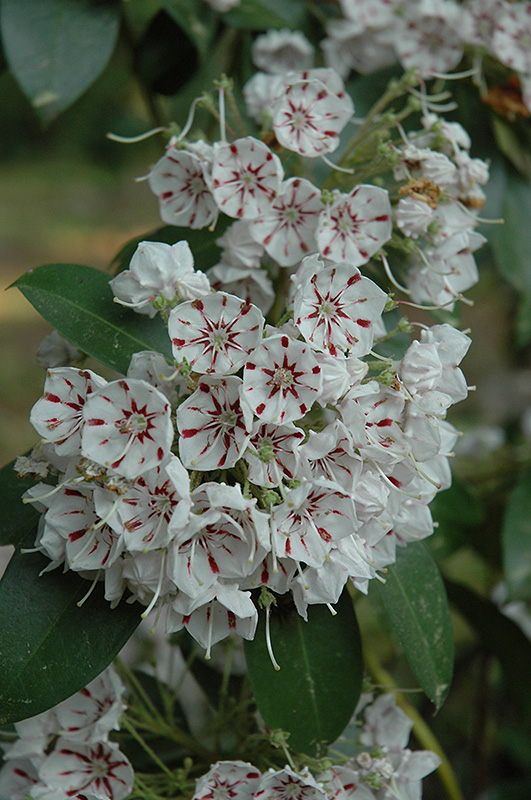Peppermint Mountain Laurel
Kalmia latifolia 'Peppermint'
Height: 5 feet
Spread: 5 feet
Sunlight:
![]()
![]()
![]()
Hardiness Zone: 4b
Description:
A compact spring blooming broadleaf evergreen shrub; lovely pink buds and shell pink flowers with red stripes radiating outward; must have exacting growing conditions; superbly drained highly acidic and organic soil with a heavy mulch
Ornamental Features
Peppermint Mountain Laurel features showy clusters of shell pink cup-shaped flowers with red stripes at the ends of the branches from mid to late spring, which emerge from distinctive pink flower buds. It has attractive green evergreen foliage which emerges coppery-bronze in spring. The glossy pointy leaves are highly ornamental and remain green throughout the winter.
Landscape Attributes
Peppermint Mountain Laurel is a dense multi-stemmed evergreen shrub with a more or less rounded form. Its average texture blends into the landscape, but can be balanced by one or two finer or coarser trees or shrubs for an effective composition.
This is a relatively low maintenance shrub, and should only be pruned after flowering to avoid removing any of the current season's flowers. It has no significant negative characteristics.
Peppermint Mountain Laurel is recommended for the following landscape applications;
- Mass Planting
- General Garden Use
Planting & Growing
Peppermint Mountain Laurel will grow to be about 5 feet tall at maturity, with a spread of 5 feet. It has a low canopy, and is suitable for planting under power lines. It grows at a slow rate, and under ideal conditions can be expected to live for 50 years or more.
This shrub performs well in both full sun and full shade. It requires an evenly moist well-drained soil for optimal growth, but will die in standing water. It is very fussy about its soil conditions and must have rich, acidic soils to ensure success, and is subject to chlorosis (yellowing) of the foliage in alkaline soils. It is somewhat tolerant of urban pollution, and will benefit from being planted in a relatively sheltered location. Consider applying a thick mulch around the root zone in winter to protect it in exposed locations or colder microclimates. This is a selection of a native North American species.







